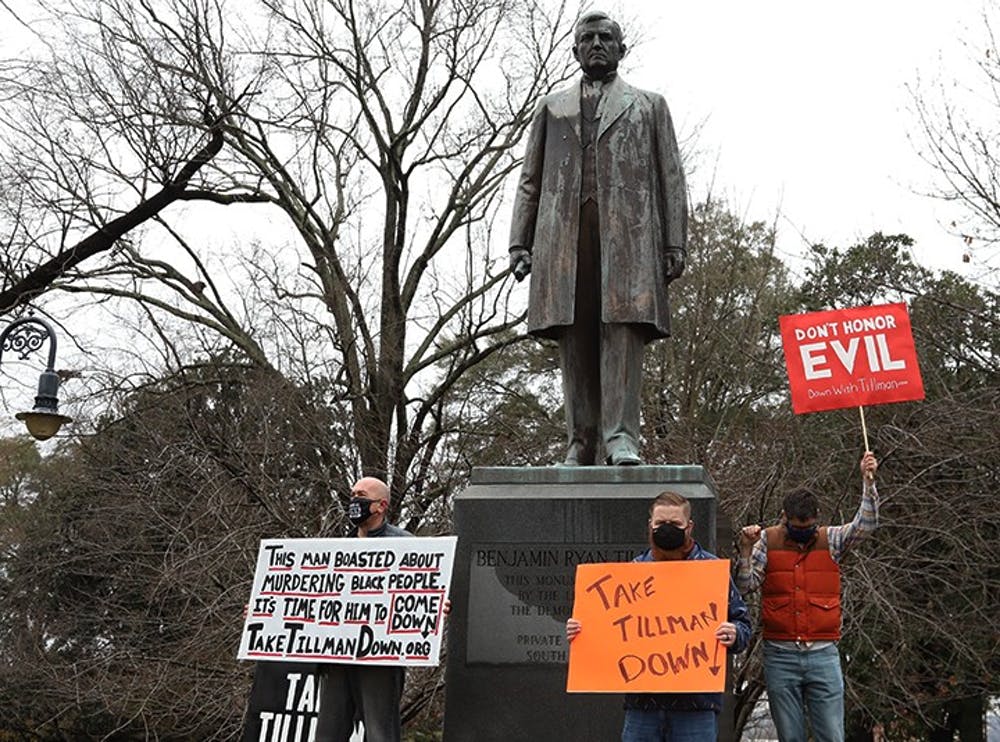In an apparent response to the mass shooting at the Highland Park, Illinois Independence Day Parade, the Washington Post published a historic flashback headlined, “July Fourth parade led to a massacre of Black people in Hamburg, S.C.” It is a subject I researched extensively for an upcoming book on race history in America.
Post writer Ronald Shafer gives a fairly good blow-by-blow account of the events as they unfolded in 1876. What is not included in the article, however, may be the most important information in putting the events into proper perspective.
What became known as the Hamburg Massacre involved the murder and wounding of a group of Black militia men in the small minority community of Hamburg, South Carolina by a group of approximately 200 White vigilantes known as the “Red Shirts.” They were one of the scores of paramilitary groups that would forcefully take over the old Confederacy for the Democratic Party – the most notable being the Ku Klux Klan. Others included the White Citizens Councils, the Knights of the White Camellia and the Red Shirts.
And that is Shafer’s first journalistic sin-of-omission. Not once in his 1300-word article does he mention by name those who bore the primary responsibility for the massacre – and for all the other terrorist activities that characterized the south for more than 100 years. Namely, the Democratic Party.
If you read the full article linked above, you will have a much clearer picture of the importance of the Hamburg Massacre if you mentally replace “white men” with Democrats. It is not an unreasonable or unfair exercise because this event – and the many other terrorists and racist acts in the days of southern segregation — were for the benefit of the reigning Democratic Party.
The Hamburg Massacre was one of THE MOST IMPORTANT EVENTS in the transition of the old south from the era of Reconstruction – that empowered Black citizens – to the reign of terror that took away their newfound rights and oppressed them with violence and injustice.
1876 was an election year. President Grant was finishing up his second term – and Republican Rutherford B. Hayes was vying with Democrat Samuel Tilden for the presidency. It was a close election, and as happens on occasion, it became very controversial. Tilden won the popular vote, but the nation was on edge over the legitimacy of the election in the Electoral College.
Tension had been rising in the south over the continuing presence of the United States military – and the enforcement of the Republican Reconstruction plans that enabled Blacks to open businesses, vote and even hold office – even in the United States House and Senate. The presence of the militia was particularly upsetting to the defeated Democrats.
The Hamburg Massacre became the hot point of southern resentment. To gain an Electoral College victory by one vote, Hayes agreed to remove the military from the southern states. Almost instantly, the Democratic Party, and its terrorist paramilitary units, began forcibly taking over the local and state governments – often by driving out Republican and Black government officials at the end of a gun. It was the beginning of the Democrats’ 100 years of racial terrorism on the Negro population.
One of the murderers of the Black militia men was a young Democrat named “Pitchfork” Ben Tillman (pictured above). He not only admitted killing the soldiers, but he also bragged about it. He said the massacre was nothing more than “having the whites demonstrate their superiority by killing as many of them as was justifiable.”
He added that it was “the first opportunity that the Negroes might offer to them to provoke a riot and teach the Negroes a lesson.”
In reflecting on his murders when later campaigning for the Senate, Tillman said, “We have scratched our heads to find out how we could eliminate the last one of them. We stuffed ballot boxes. We shot them. We are not ashamed of it.”
Tillman was never held accountable for his actions because the Democrat leadership held the same views. Tillman went on to be the Democrat governor of South Carolina and then the United States Senator.
It was a time when progressive economic policies were inextricably tied to racial prejudice. In the Senate, Tillman was part of the racist Woodrow Wilson progressives. Though Tillman died 14 years before the inauguration of Franklin Roosevelt, he was retrospectively referred to as the “first New Dealer.”
As far as I know, Tillman’s statue still remains in a place of honor on the grounds of the South Carolina capital in Columbia.
The racist influence of Tillman even flowed into mid-20th Century Chicago. A racist Irish social club devoted to beating and allegedly killing blacks who did not know their place was named the Hamburg Athletic Club in remembrance of the Hamburg Massacre. That Club was headed by a young future mayor of the Windy City … Da Boss Mayor Richard J. Daley. It has been widely rumored that Daley participated in at least one murder. Local historians often wondered why the Irish boys picked a German name. Now they should know.
There were innumerable atrocities against Negro Americans for generations – many massacres. But as bad as they were, none held the significance on an epic scale as did the relatively unknown events in Hamburg, South Carolina. It was an unfortunate transition from Negro rights and freedoms to violent oppression.
Shafer brought some necessary light on the subject, but he totally missed the BIG PICTURE. But he is not alone. Virtually all recounts of structural racism in America today fail to name the institution most responsible – the Democratic Party. Ignoring that fact in favor of today’s false racial narratives is the reason why we have not yet eradicated the last vestiges of institutional racism in our Democrat-controlled segregated cities.
So, there ‘tis.
